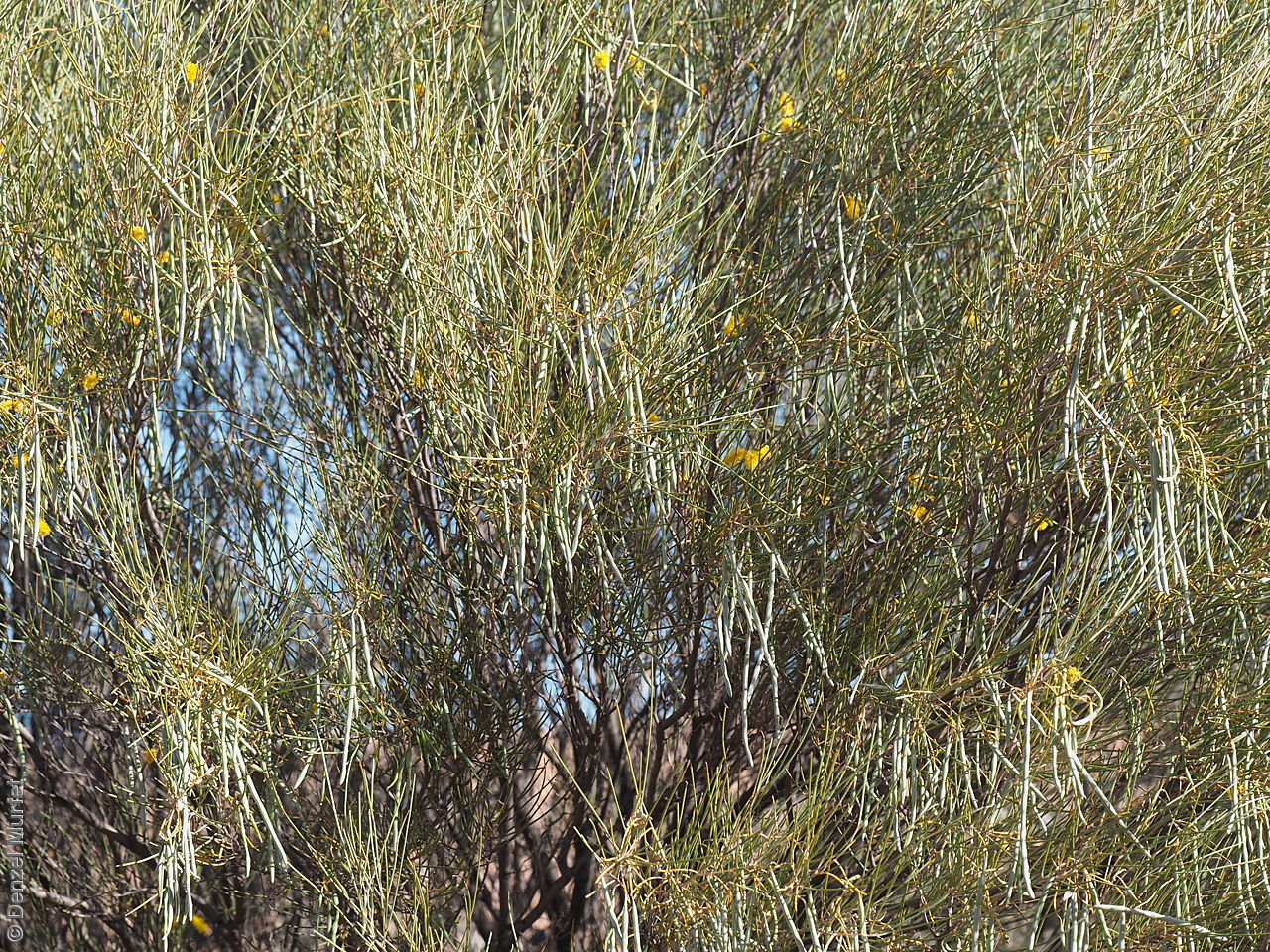

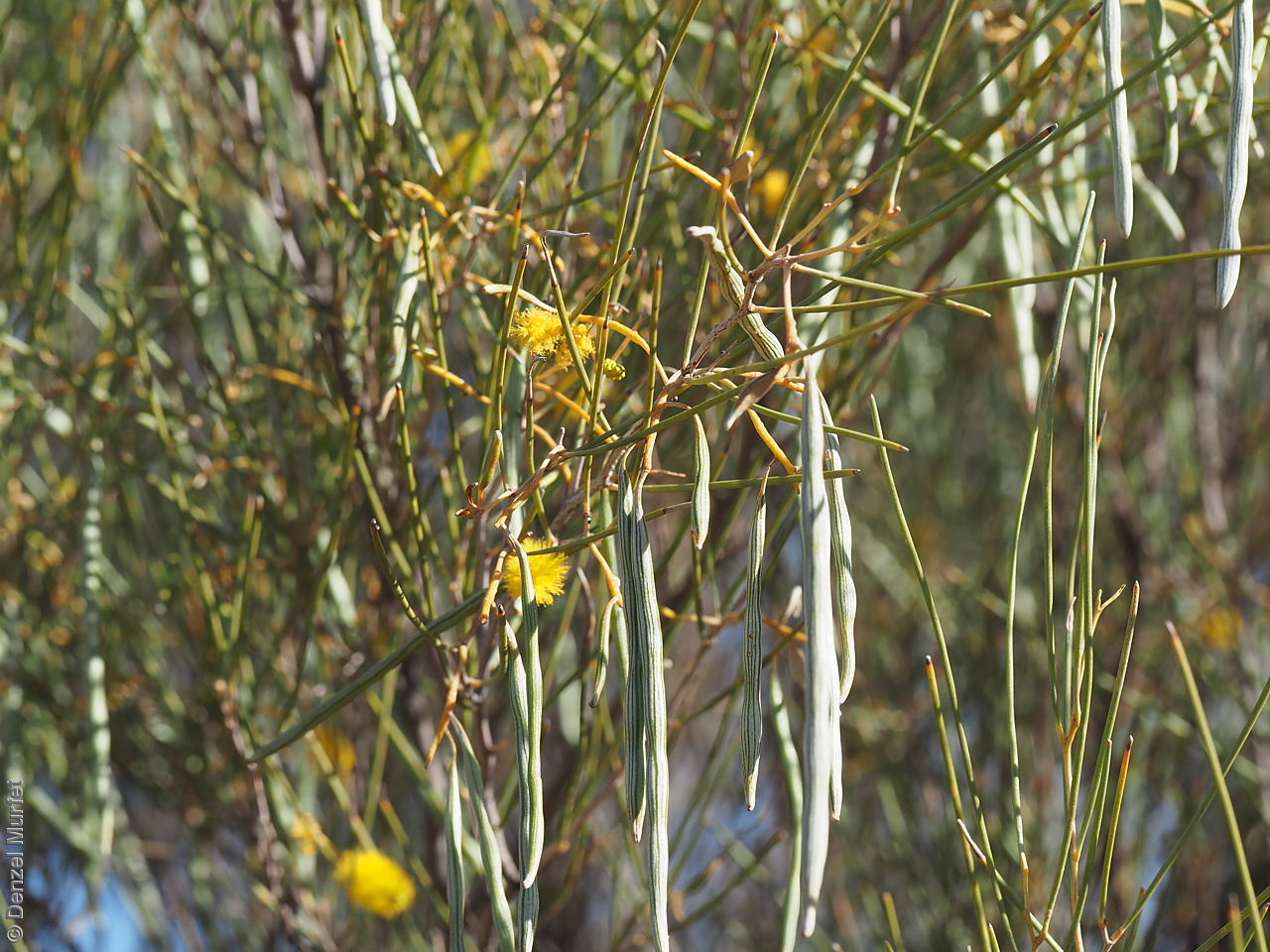
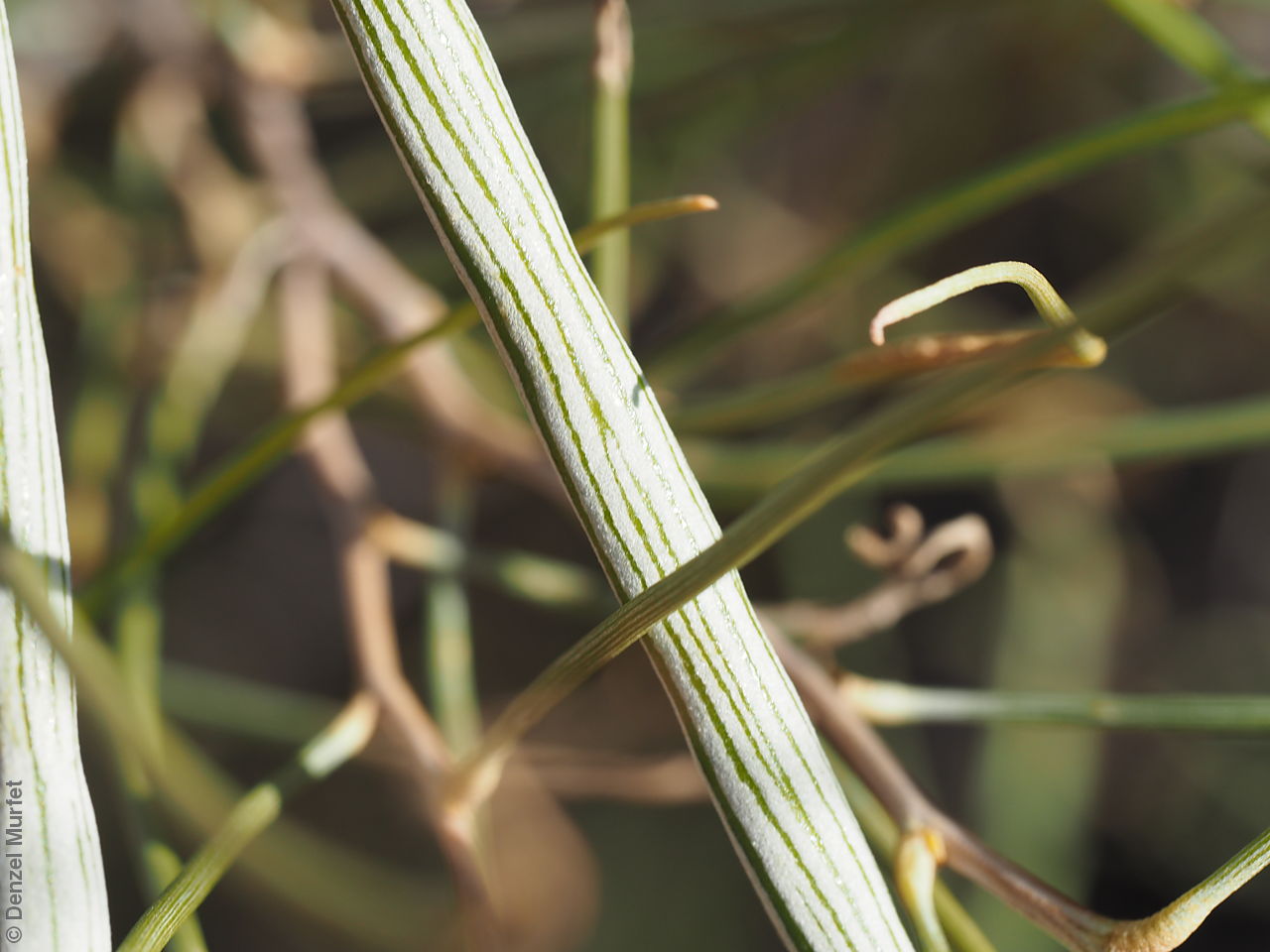
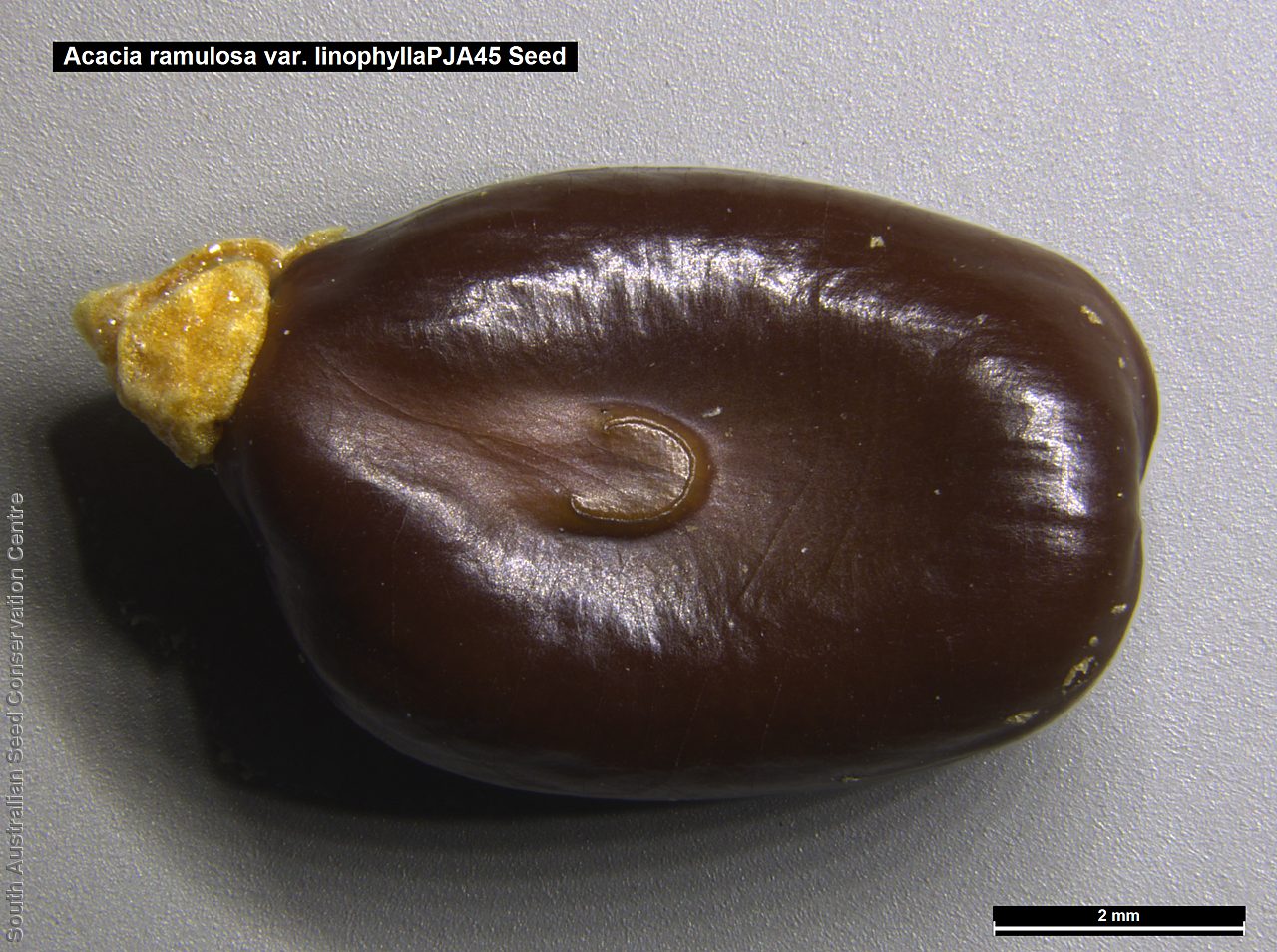
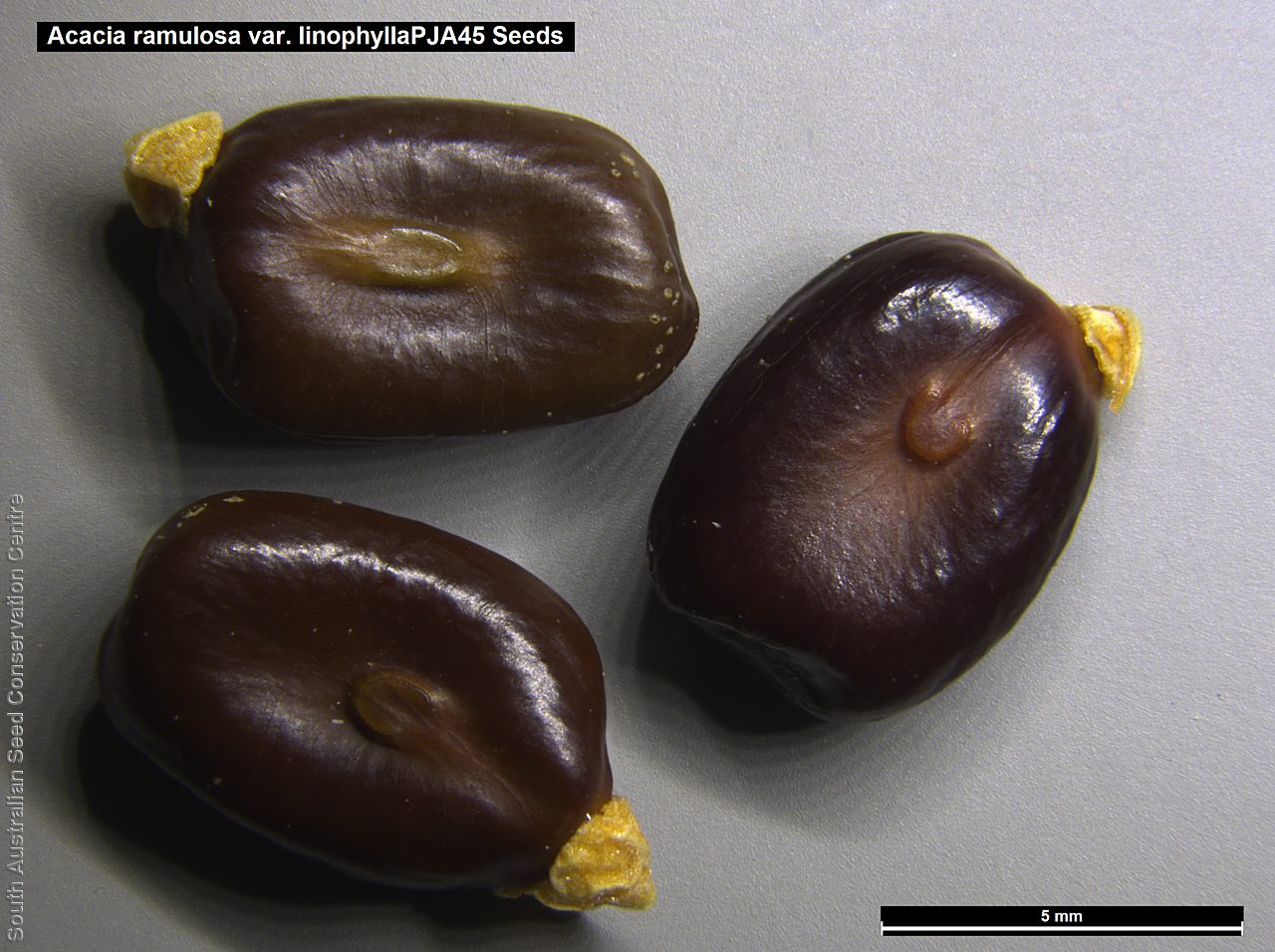

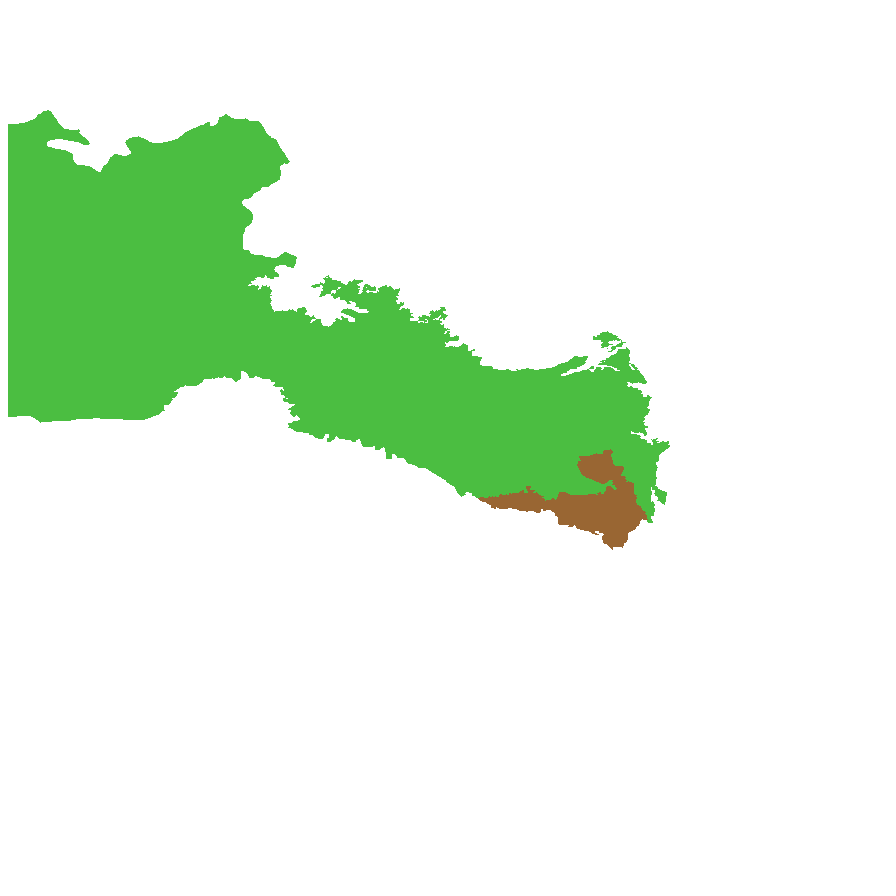
Prior names
Racosperma ramulosum, partly
Acacia linophylla
Common names
Sand Dune Mulga
Horse Mulga
Etymology
Acacia from the Greek 'akakia' and derived from 'ake' or 'akis' meaning a sharp point or thorn and 'akazo' meaning to sharpen. Dioscorides, the Greek physician and botanist used the word in the 1st century AD for the Egyptian thorn tree, Acacia arabica. Ramulosa from the Latin 'ramulosus' meaning having many branchlets. Linophylla from the Greek 'linon' meaning net and 'phyllon' meaning a leaf.
Distribution and status
Found scattered across the northern part of South Australia on sandy soils, often on dunes and on sand-plains. Also found in Western Australia and Northern Territory. Native. Common in South Australia. Common in Western Australia. Uncommon in Northern Territory.
Herbarium regions: North Western, Lake Eyre, Nullarbor, Gairdner-Torrens, Eyre Peninsula
NRM regions: Alinytjara Wilurara, Eyre Peninsula, South Australian Arid Lands
AVH map: SA distribution map (external link)
Plant description
Shrub to 5 m tall, often spreading with erect foliage and often wider than high. Branchlets with appressed white hairs between ribs. Leaves greyish green, round in cross-section and held almost vertically; to 16 cm long and 1.4 mm diameter. Inflorescences usually single in axils, with yellow, cylindrical flower-heads. Differs from Acacia ramulosa var. ramulosa in have more terete leaves. Fruits are straight, brown, cylindrical pod to 13.5 cm long and 10 mm diameter, abruptly tapered at each end, with dense appressed silvery hairs between the prominent resinous ridges. Seeds are hard, dark brown, oblong seed to 7 mm long and 6 mm wide. Seed embryo type is investing.
Seed collection and propagation
Collect seeds between November and December. Collect mature pods that are turning brown, with hard, dark seeds inside. Place the pods in a tray and leave to dry for 1-2 weeks or until the pods begin to split. Then rub the dried pods to dislodge the seeds. Use a sieve to separate any unwanted material. Store the seeds with a desiccant such as dried silica beads or dry rice, in an air tight container in a cool and dry place. This species has physical dormancy that needs to be overcome for the seed to germinate (e.g. nicking or softening the seed coat).
| Location | No. of seeds (weight grams) | Number of plants | Date collected | Collection number Collection location | Date stored | % Viability | Storage temperature |
|---|---|---|---|---|---|---|---|
| BGA MSB | 2,315 (166.7 g) 2,315 (166.7 g) | 15 | 30-Nov-2003 | PJA45 North Western | 1-Sep-2004 | 100% | -18°C |
Number of plants: This is the number of plants from which the seeds were collected.
Collection location: The Herbarium of South Australia's region name.
% Viability: Percentage of filled healthy seeds determined by a cut test or x-ray.